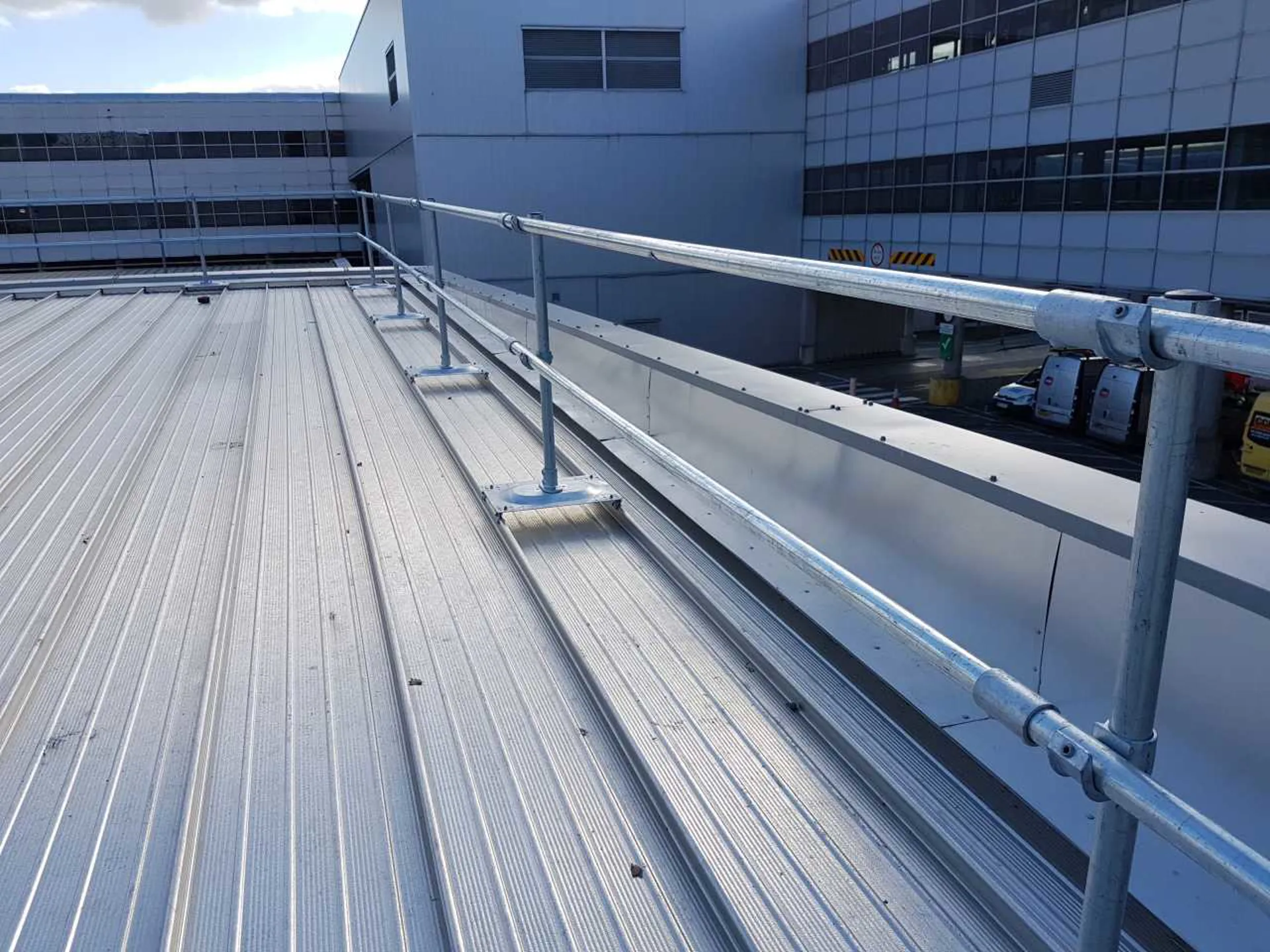

The Warehouse Worker Injury Reduction Act, officially known as New York State Assembly Bill A8907A, is a law that tackles the growing number of workplace injuries in warehousing by requiring employers to step up their safety game with injury prevention programs, ergonomic improvements, and better training. For a company like Kee Safety, which is all about keeping workplaces safe, this is a chance to help warehouse operators meet these new standards while putting worker well-being first. In this guide, we’ll break down what the Act is all about, what it means for warehouses, and how Kee Safety’s solutions can make compliance straightforward and effective.

Introduced on January 30, 2024, and later amended as A8907A, this Act adds a new section (799-a) to New York’s Labor Law. It’s designed to cut down on injuries in warehouses, especially in facilities with higher-than-average injury rates, as tracked by the U.S. Bureau of Labor Statistics. The law applies to warehouse employers, with extra requirements for those with 50 or more workers at one site or 100 or more across multiple locations in New York. At its core, it’s about creating safer workplaces through practical steps like better ergonomics, training, and teamwork between management and employees.
June 1, 2025: All covered employers must have their injury reduction programs operational.
June 19, 2025: Deadline for completing initial worksite evaluations by qualified ergonomists.

Here’s what warehouse employers need to know about the Act’s main requirements:
Injury Reduction Program:
Every warehouse needs a written plan to prevent injuries, tailored to its specific operations.
The plan should focus on ergonomics to reduce strain from repetitive tasks like lifting or reaching, using tools and setups that make work safer.
It’s about spotting risks early, fixing them with smart solutions, and always looking for ways to improve.
Training for Everyone:
New hires must get safety training within 30 days, and all employees need a refresher every year.
Training covers workplace hazards, safe practices, ergonomic tips, and how to use protective gear like harnesses or gloves.
Materials must be in languages employees understand, so everyone’s on the same page.
Safety Committees:
Larger warehouses (50+ workers at one site or 100+ across sites) need to form joint safety committees with both workers and management.
These teams review injury reports, suggest improvements, and keep an eye on how the injury reduction plan is working.
Ergonomic Focus:
The Act pushes for work setups that reduce physical stress, like adjustable workstations or tools that lighten the load.
Employers need to assess their setups and make changes to keep workers comfortable and safe.
Keeping Records:
Employers must track injuries, training sessions, and committee work, with records ready for state inspectors.
This paperwork shows you’re following the rules and taking safety seriously.
Enforcement:
The New York State Department of Labor will check compliance, and there are penalties for falling short, from fines to stricter oversight.
Staying on top of the requirements keeps operations smooth and penalty-free.

With e-commerce booming, warehouses are busier than ever, but they also have some of the highest injury rates around. The Bureau of Labor Statistics points to issues like muscle strains, slips, and falls as major culprits. This Act is a wake-up call to make safety a priority, and it comes with real benefits:
Fewer Injuries: Safer practices mean healthier workers who can do their jobs without pain or downtime.
Better Productivity: When injuries drop, so does lost time, keeping operations running smoothly.
Lower Costs: Fewer injuries translate to lower insurance claims and less risk of lawsuits.
Staying Legal: Following the Act keeps you on the right side of the law, avoiding fines or headaches.
For warehouse operators, this isn’t just about checking boxes—it’s a chance to build a safer, more efficient workplace.

At Kee Safety, we’ve been helping workplaces stay safe for years with our top-notch fall protection and safety solutions. Here’s how we can help warehouses meet the Act’s requirements while keeping workers protected:
Kee Safety's Warehouse Traffic Protection solutions are engineered to safeguard personnel, equipment, and infrastructure from vehicular impacts within warehouse environments. Key products include:
Traffic Shield Safety Barrier: A modular steel guardrail system that protects against collisions from moving vehicles, enhancing worker safety.
Impact Safety Barriers: Heavy-duty steel barriers capable of stopping a loaded forklift moving at 5 mph, preventing accidents and structural damage.
Rack Shield Safety Barrier: Designed to wrap around pallet racking corners, these guards protect against collisions from any angle, preserving both racking integrity and worker safety.
These solutions help tackle the Act’s call for safer workplaces and fewer injuries.

While we don’t run training sessions ourselves, our safety experts can help you weave our solutions into your training programs:


The Warehouse Worker Injury Reduction Act is here—and with it, new responsibilities for employers. Now is the time to act. Don’t wait for fines, lawsuits, or workplace injuries to force your hand.
Need help ensuring compliance and keeping your warehouse safe? Kee Safety’s fall protection and guardrail solutions for warehouses can help meet these requirements while creating a workplace where employees thrive. Let’s work together to make safety first—contact us for a consultation to get started.

Working with Kee Safety gives you a partner who’s as committed to safety as you are.

Please fill in your details below and we’ll be in touch shortly.